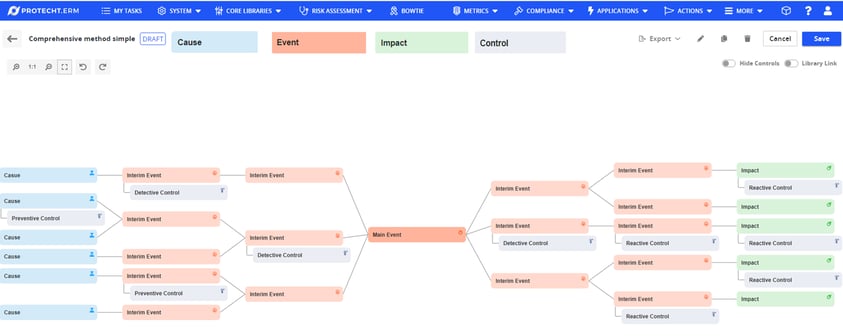The clothing sense of 'bow tie' originates from the 17th century. Croatian mercenaries held their shirts together around the neck using tied scarfs during the Prussian war. The neckwear then gained favour as a fashion statement by the French (cravats) and as they say, the rest is history.
Now in the 21st century, we are using them to tie risk together. Welcome to the risk bow tie! Rather than Croatian mercenaries, risk bow ties originated in Australia in the 1970s at the University of Queensland. They then gained favour with the oil and gas industry and later, the wider workplace health and safety discipline. They are now becoming the "formal wear" of choice for risk practitioners as they can be worn for any risk occasion.
Do you want to know more about risk bow ties and learn how to create your own? Download our free Risk Bow Tie Analysis eBook to understand the relationship and view a step-by-step guide:
Why use a risk bow tie?
Unlike their dress wear namesake, risk bow ties can be used for a wide range of occasions.
These include:
- Analysing incidents, including root cause analysis, in order to identify what went wrong and as a result, what we can do to fix it.
- Supporting risks as part of risk assessment so that they are fully understood.
- Supporting a complete picture of risk so that we understand the drivers, the impacts, and the controls.
- Helping to identify the risk metrics / key risk indicators that can be used to track the risk.
Basic principles of a bow tie analysis
The risk bow tie sets out the components of risk, being causes, events, impacts, and controls from left to right based on the timeline of risk.
Once completed it shows the connections between all of the components with related controls and the specific point to which the control relates.

Image: Example risk bow tie analysis in Protecht ERM.
Who should use risk bow ties?
Everyone! I'm not joking when I say everyone should know how to tie a risk bow tie. My 14 and 16-year-old children know how to do it (It's a great tool to get children to understand cause and impact).
It is a tool for the board to help board members understand the key risks that the organisation faces. It is equally as valuable for executive management and all the way to the coal face where detailed analysis is required of incidents that have occurred. The principle that "everyone is a risk manager" means that everyone needs to understand risk and the Bow Tie is a great way to do that.
As I always say at the end of my risk bow tie training "Go forth and bow tie!"
Learn more about bow tie analysis
Are you interested in in learning more about risk management tools and techniques? Protecht's Bow Tie Analysis eBook tells you all you need to know about the effectiveness of risk bow ties. With this graphical eBook, full of explanatory images, you will be able to see the value you can gain from a logical and simple way of looking at even the most complex of risks and incidents.
Download your free copy now to understand the relationships between cause, event, impact and controls, and to get a step-by-step guide to creating your own bow tie:
Risk bow ties in Protecht ERM
The bow tie functionality within Protecht ERM provides a powerful and intuitive way to visualise, analyse, and communicate the different components of risk. This tool simplifies the complex process of risk management, ensuring that all stakeholders have a clear and consistent understanding of risks, their causes, impacts, and the necessary controls. .
Key features of Protecht ERM's risk bow tie tool include:
-
Visualisation tool: Easily create and edit bow ties with an intuitive interface.
-
Effortless linkages: Seamlessly connect causes, risks, impacts, and controls, including interim risks.
-
Export options: Export bow tie images to PDF or PNG for easy sharing and reporting.
-
Collaboration: Share bow ties with colleagues to ensure a collaborative approach to risk management.
-
Risk events library integration: Pull risk events directly from your organization’s Risk Events library for comprehensive analysis.
This feature not only enhances your ability to understand and communicate risks. but also empowers your organisation to take active steps in mitigating them.
Ready to see Protecht ERM in action? Book a demo today and discover how our comprehensive risk management solution can transform your approach to managing risks:
This blog was originally published in September 2021 and updated in June 2024.


